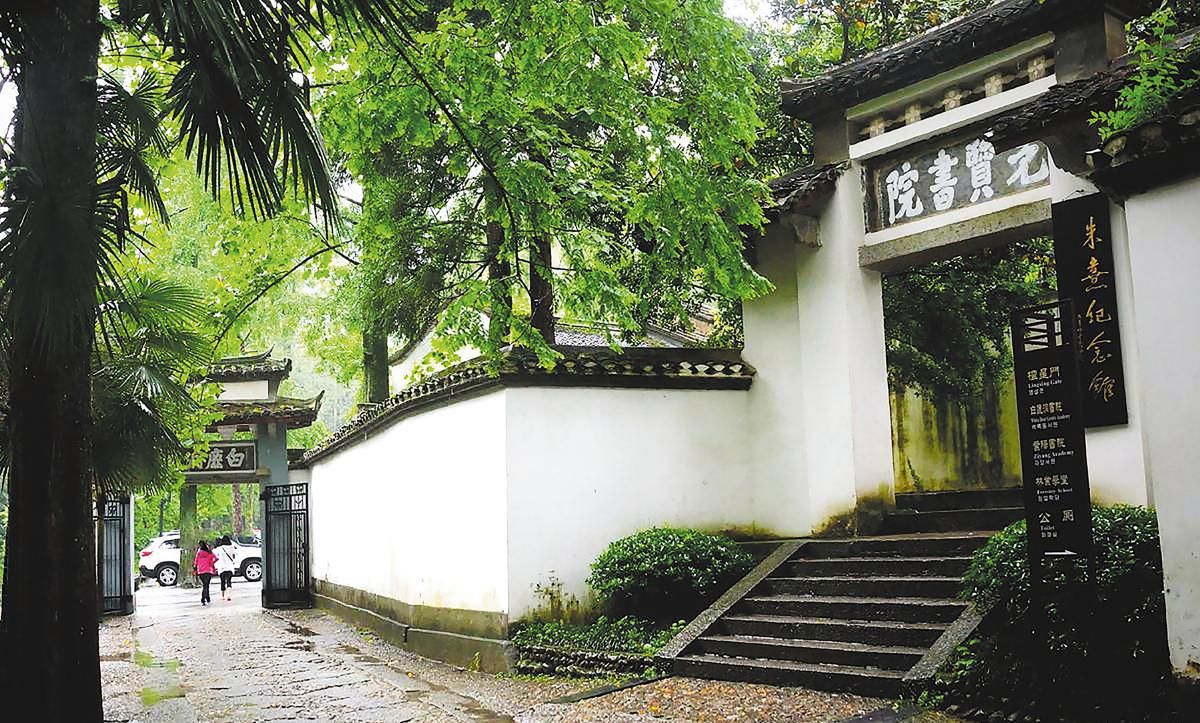
The gate of Xianxian Academy, which is part of the building complex of Bailudong Academy in Jiujiang, Jiangxi province. DUAN CHANGZHENG/FOR CHINA DAILY
During students' winter vacation in late January, Bailudong Academy, located at the foot of Lushan Mountain in Jiujiang, Jiangxi province, welcomed many young visitors.
Among them was 12-year-old Wang Jing, who along with her parents had traveled from Wuhan in neighboring Hubei province to visit the academy.
"Bailudong Academy was very famous in ancient times. We wanted to show our child how people studied in the past and what the study environment was like," said He Fang, Wang's mother.
Bailudong Academy, also known as White Deer Grotto Academy, is one of ancient China's four great academies, alongside Yuelu Academy in Changsha, Hunan province; Songyang Academy in Dengfeng, Henan province; and Yingtian Academy in Shangqiu, Henan.
Inside the institute, there is a small pavilion where students would hold discussions and study. The gap between the pavilion and the walls is very narrow, just wide enough for one person to pass through.
This passage served as a place for students to reflect on their mistakes. Wang and his parents passed through it and found it intriguing. "It's more fun here than I imagined. Our predecessors did not just sit in a classroom and study. Instead, many places here show me how they lived," Wang said.
The oldest building in the academy is the Lingxing Gate, built in 1467, with Zhuangyuan Bridge situated behind it.
A Zhuangyuan was someone who ranked as first class in the palace examination, the highest level of the Chinese imperial examination.
Many visitors cross this bridge to seek good luck in their exams, according to tour guide Zuo Jingjing.
The history of the academy can be traced back to before 1467, to the Tang (618-907) and Song (960-1279) dynasties.
In 785, scholar Li Bo and his brother Li She raised a clever white deer in seclusion, which fetched study materials for them, according to historical accounts. Years later, Li Bo, who became governor of Jiangzhou, named a valley after the deer to commemorate the brothers' hard work.
In 940, the valley's "kiosk" was transformed into a government-sponsored school, and by 1179 the academy had emerged as a renowned center of learning.
Zhu Xi, one of the most influential Confucian scholars, then revitalized the academy, turning it into a prominent educational institution that attracted notable scholars and produced outstanding graduates.
In those times, Bailudong Academy had a status equivalent to China's current top higher learning institutes, such as Tsinghua and Peking universities.
"The academy is a unique educational institution that served as a place for the dissemination of culture, academic exchanges, and talent cultivation in ancient China," said Yang Desheng, head of the academy's management committee.
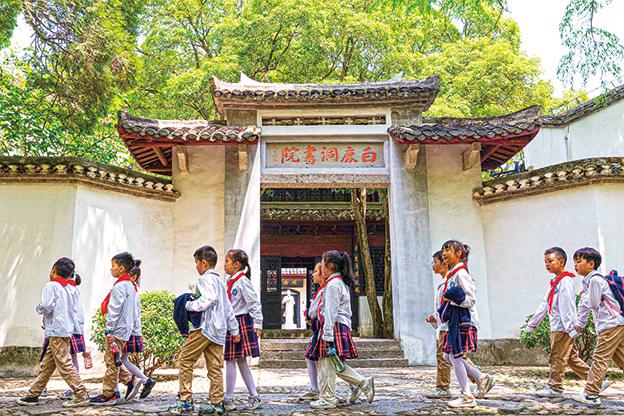
Primary school students visit Bailudong Academy to learn traditional Chinese culture. XINHUA
Southern strength
In addition to Bailudong, Jiangxi has had numerous other academies with well-established reputations.
During the Northern Song Dynasty (960-1127), there were 73 large government-sponsored academies nationwide, with 23 located in Jiangxi alone, according to the province's official records.
In the Southern Song Dynasty (1127-1279), there were 417 academies nationwide, with about 100 in Jiangxi.
The well-developed academy system provided Jiangxi with a significant educational advantage, producing many Jinshi scholars (imperial scholars) during the Song and Ming (1368-1644) dynasties.
"At that time, Jiangxi was economically developed and densely populated and a large number of scholars naturally emerged. These scholars, nurtured in a strong academic atmosphere and with the developed academy system, excelled in the imperial examinations during the early Ming Dynasty," said Fang Zhiyuan, a Ming history expert and a professor at Jiangxi Normal University.
According to the Ming Dynasty Jinshi List, over 3,000 Jinshi scholars from Jiangxi emerged during the Ming Dynasty, including 18 who achieved the top rank, the second highest amount nationwide after Zhejiang province.
Jinshi was the highest scholarly degree obtained through official examinations during the Ming and Qing (1644-1911) dynasties, and an end point of a scholastic career and the start of becoming a government official.
The abundance of Jinshi graduates from Jiangxi even affected the Ming Dynasty's imperial examination system.
In the 30th year of the Hongwu period of the Ming Dynasty, all 51 candidates were from the southern regions, leading to protests from the northern examinees. Known as the "Southern List", it included 18 from Jiangxi, accounting for over 30 percent of the total candidates.
In response to northern examinees' anger, Emperor Zhu Yuanzhang decided to reorganize the examination and personally review the papers. As a result, 61 northern examinees were admitted, leading to what became known as the "Northern List".
To prevent southern candidates from dominating the rankings, the central government subsequently began to segregate the admission of Jinshi scholars by region.
In addition to its educational contributions, Bailudong Academy also served as a venue for communication and exchanges between Chinese and Western cultures.
During the late Ming and early Qing dynasties, with the initial wave of knowledge from Western countries sweeping across China, thousands of Catholic missionaries came to the country, including the renowned Italian Matteo Ricci.
In 1595, Ricci arrived in Nanchang, the capital of Jiangxi province, and resided there for three years. During this time, he had significant interactions with Zhang Huang, the headmaster of Bailudong Academy, and his students.
In his letters home, Ricci mentioned Bailudong Academy several times, noting how he introduced Christianity and its doctrines to the academy's teachers and students.
In a letter dated Nov 4, 1595, Ricci wrote: "I am pleased with the scholars at Bailudong Academy. They treated me very kindly, often debating with me on significant issues of life and the afterlife.… The headmaster and I are good friends, and we often meet and talk with each other."
Ricci also mentioned how he introduced Western disciplines like mathematics to the scholars and students in Nanchang, which garnered the interest and attention of the Bailudong Academy community.
In a letter dated Oct 28, 1595, he wrote: "The scholars and other literati at Bailudong Academy enjoy hearing me talk about mathematics. If I could settle here, I would like to introduce them to this field."
Xiao Lang, a professor at the School of Education at Zhejiang University, wrote in a paper: "The historical exchanges between Ricci and Bailudong Academy represent a noteworthy chapter in ancient Chinese educational history, the history of academies, and the cultural and educational exchanges between East and West."
Guo Hongda, the former deputy director of the administrative committee of Bailudong Academy, said: "Bailudong Academy has a long history of education and a profound influence. The set of school rules established by Zhu Xi at the academy has influenced subsequent centuries, serving as a model for later generations and spreading to Japan, South Korea, and Southeast Asia, earning Bailudong Academy a worldwide reputation."
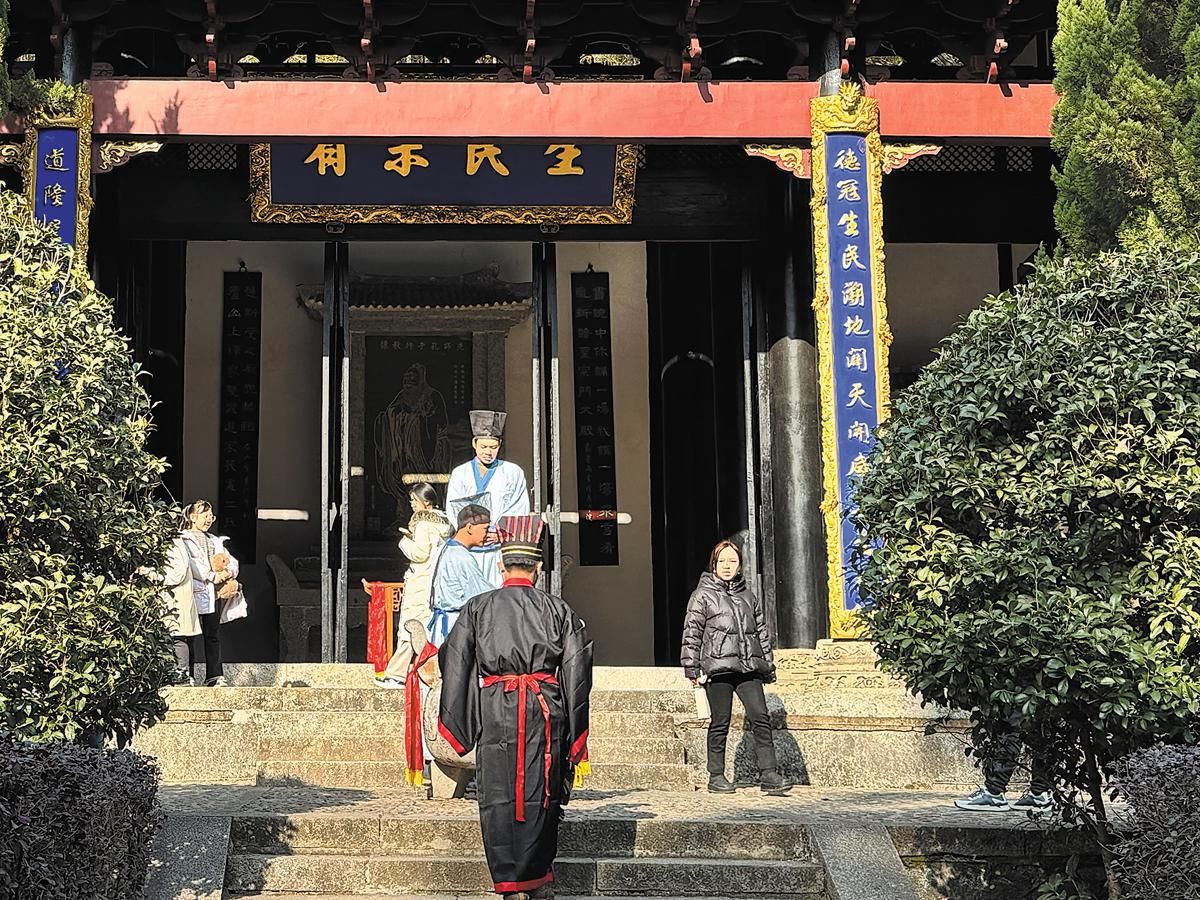
Tourists wearing ancient costumes visit Bailudong Academy on Jan 21. ZHAO RUINAN/CHINA DAILY
Building on legacy
In ancient times, academies served as spiritual homes for scholars. In the past decade or so, amid the revival of traditional Chinese culture, these academies, which have seen their share of ups and downs, have begun to thrive once more.
For instance, Bailudong Academy regularly hosts various activities, carrying on the cultural heritage.
It conducts educational activities in the ancient place, allowing students to experience Chinese calligraphy rubbings, pitching pots, painting fans, and archery in traditional Chinese classrooms, according to Guo.
Around 50,000 students like Wang visit Bailudong Academy for study trips each year.
In 2018, Bailudong Academy was awarded the title of National Primary and Secondary School Study Practice Education Base by the Ministry of Education.
"As a national cultural heritage site, the 8,000-square-meter ruins of Bailudong Academy lack proper facilities for university teaching, research activities, and accommodations. Therefore, visitors could only tour the site in the past," said Yang.
"But in the last two years, we have expanded the surrounding gardens of the academy, creating multiple tourist trails inside the institution, allowing people to experience the mindset of ancient scholars who 'learned while traveling'."
Recently, Lushan city reached an agreement for campus cooperation with Nanchang University and Jiujiang University. The two universities plan to collaborate with Bailudong Academy to revive the academy's educational tradition.
"On one hand, we will bring university courses to the academy. On the other hand, we are preparing for the construction of the Jiujiang College-Bailudong Academy campus. In the future, students from certain majors or colleges will be able to live and study at Bailudong Academy," said Yang.
Bailudong Academy is also making efforts in promoting traditional Chinese culture globally.
Guo said that the academy regularly has exchanges of experts and scholars with foreign universities, who engage in cultural exchanges and learning.
"We also host international academic seminars, inviting scholars from different countries and regions for study and exchanges. Although Bailudong Academy no longer has a teaching function like in ancient times, academic and cultural exchanges and cooperation will continue."
zhaoruinan@chinadaily.com.cn
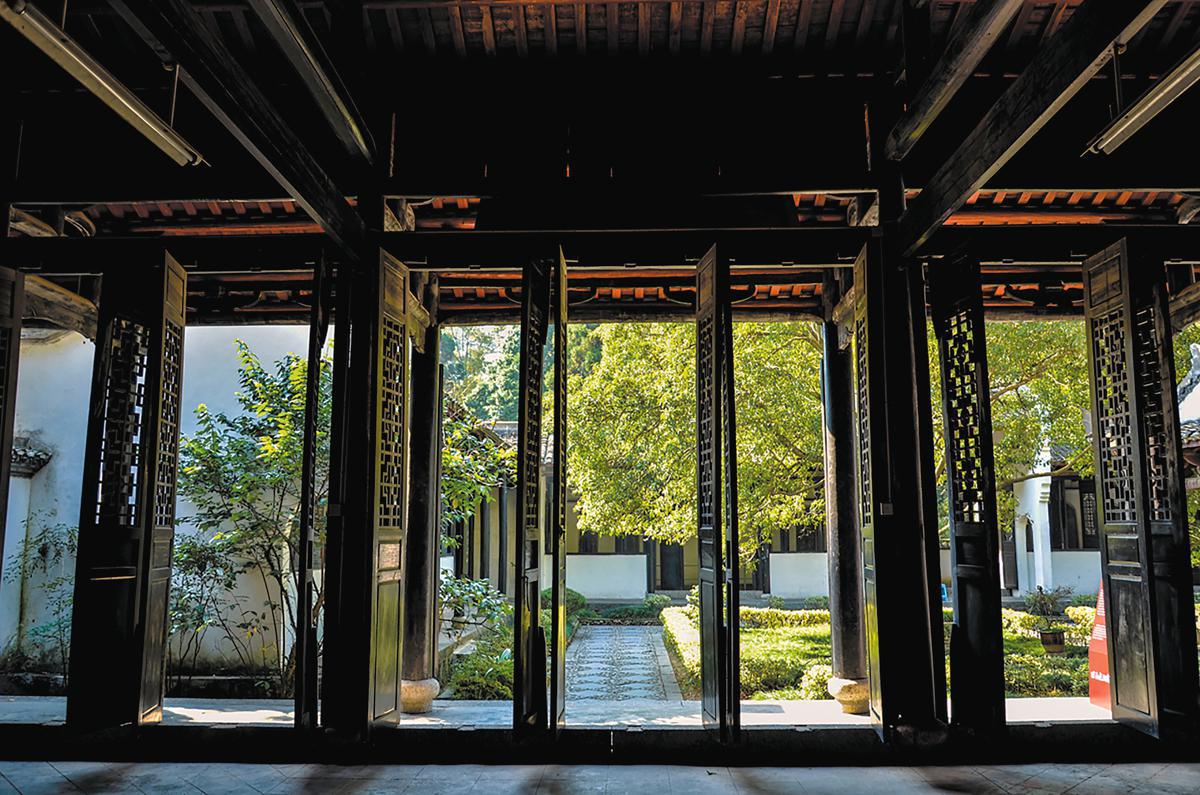
A view of an interior part of Bailudong Academy. DUAN CHANGZHENG/FOR CHINA DAILY
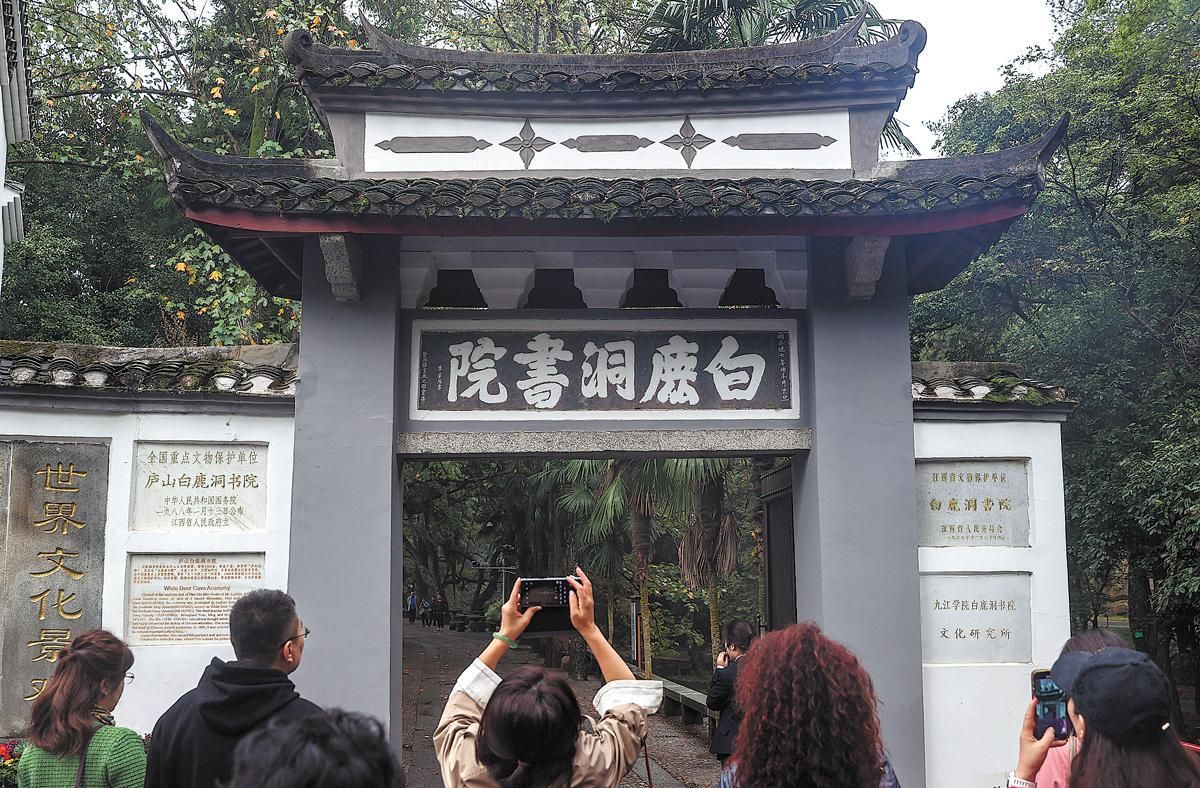
Chinese media personnel from 18 countries and regions visit Bailudong Academy in October. LIU LIXIN/CHINA NEWS SERVICE
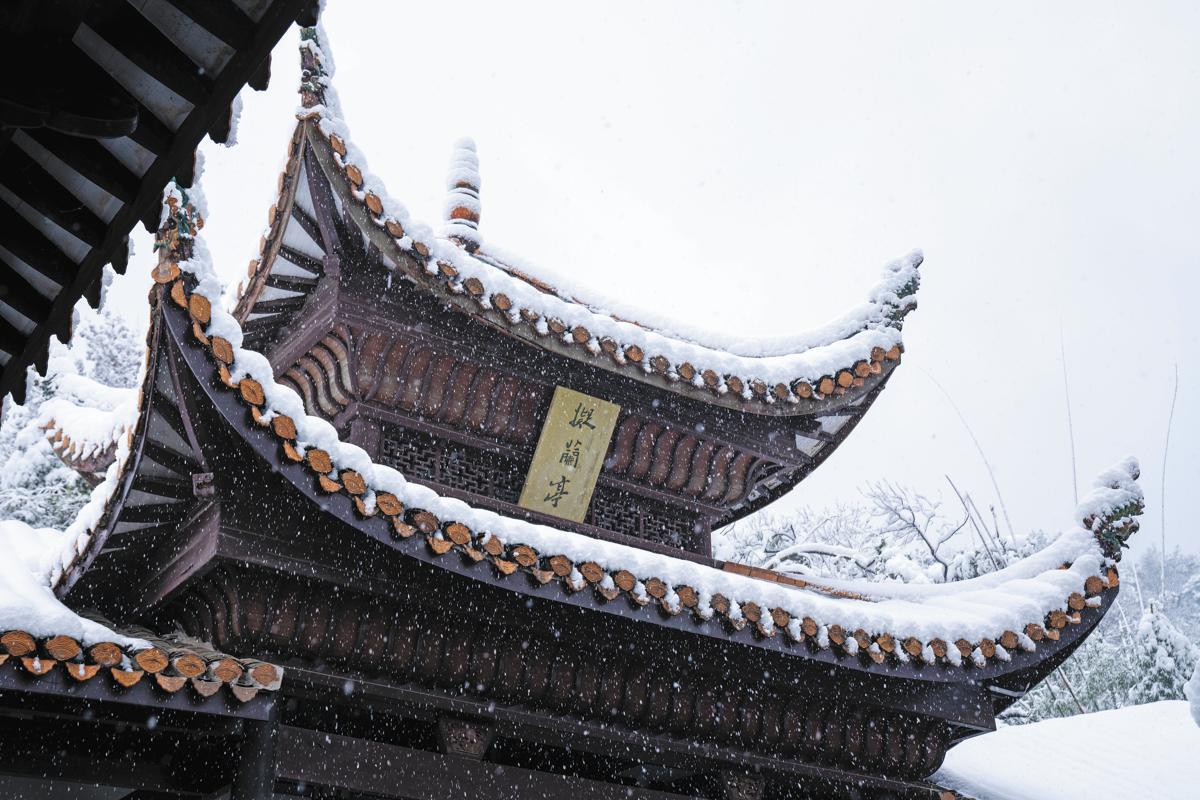
A pavilion of Yuelu Academy in Changsha, Hunan province. DUAN CHANGZHENG/FOR CHINA DAILY
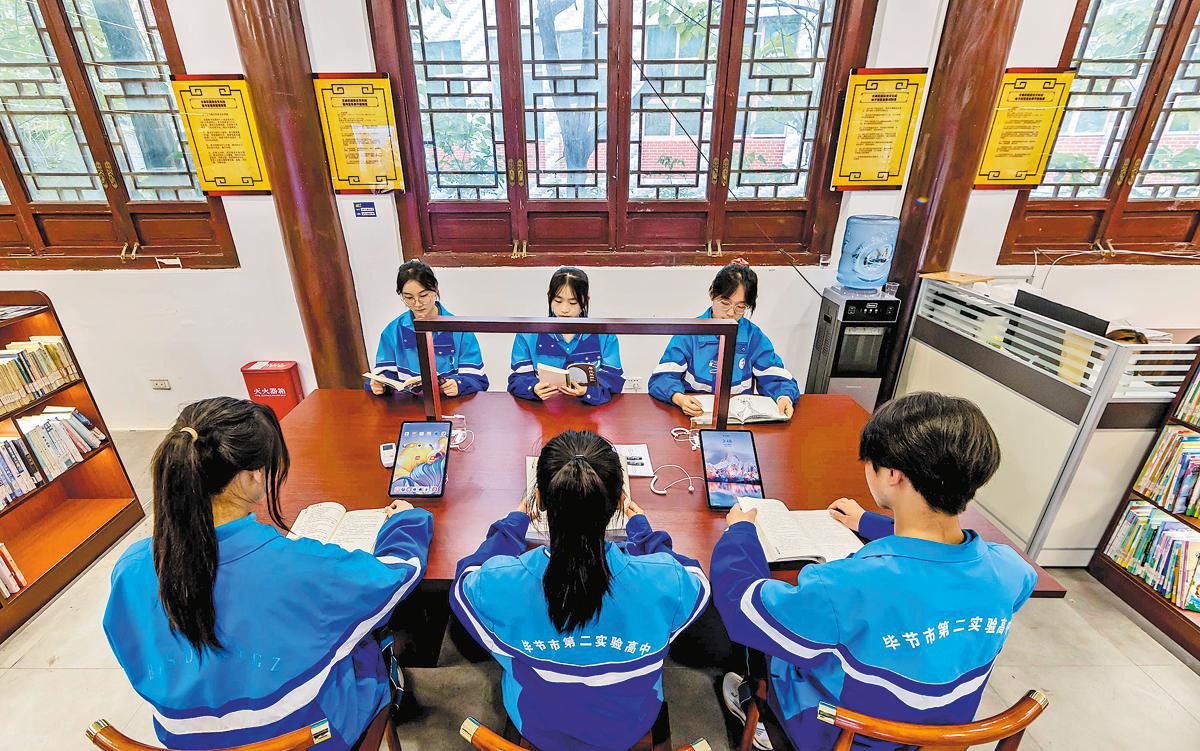
Students read books at Wenfeng Academy in Qianxi, Guizhou province in April. FAN HUI/XINHUA
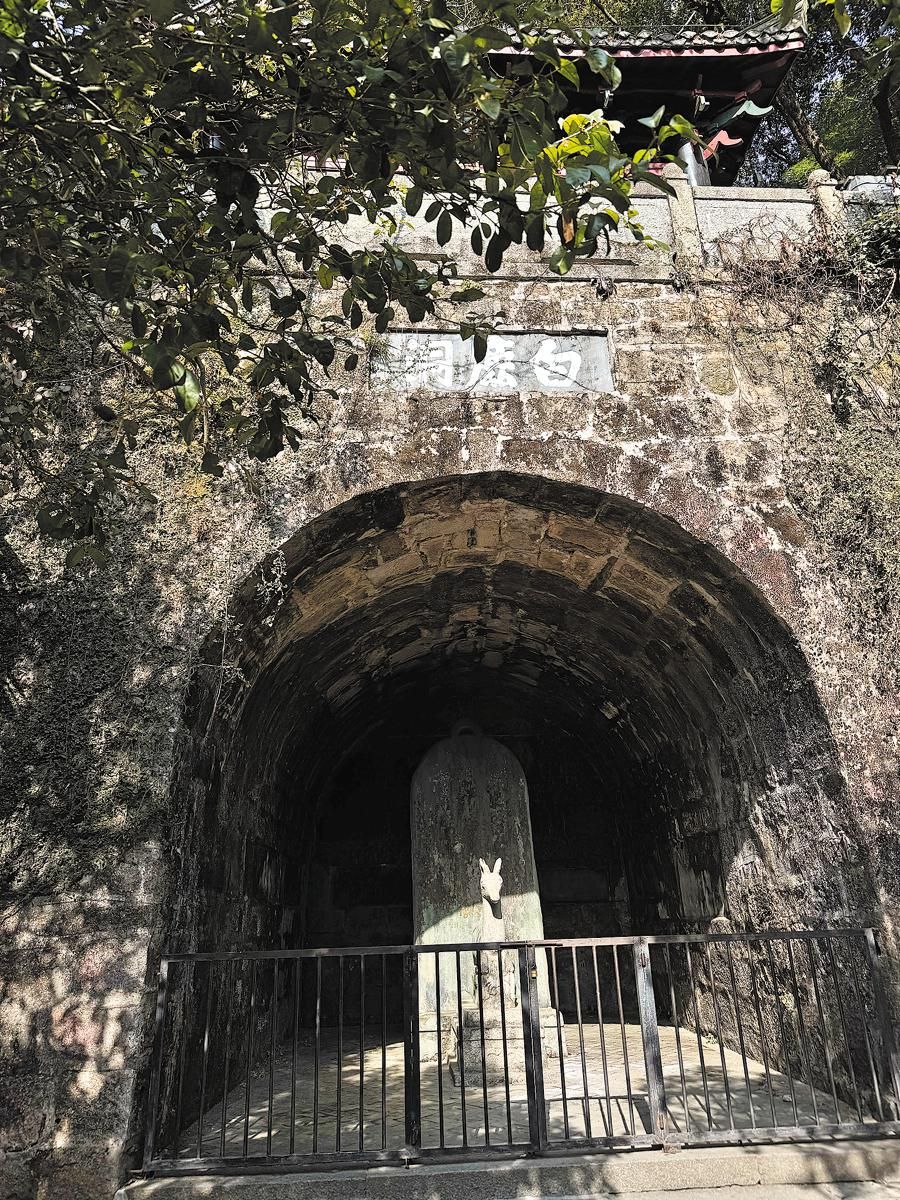
A sculpture of a white deer at Bailudong Academy. ZHAO RUINAN/CHINA DAILY
编辑:韩睿